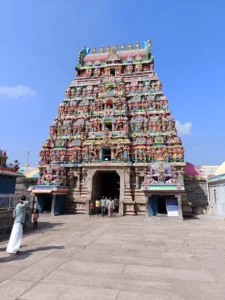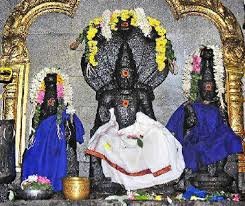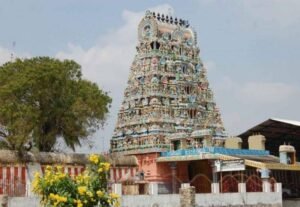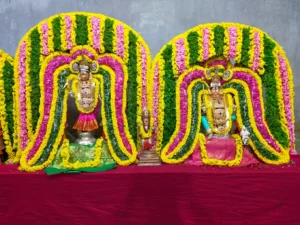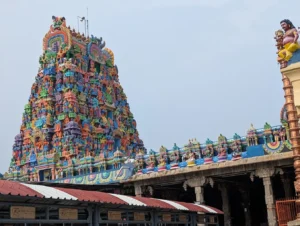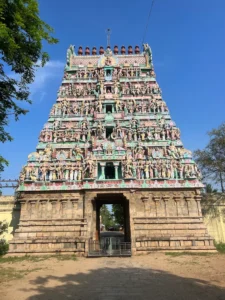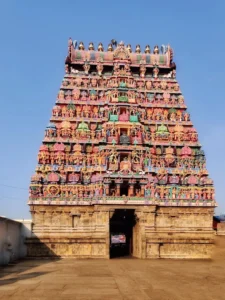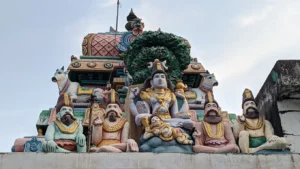Navgrah Mandir
Navgrah Mandir
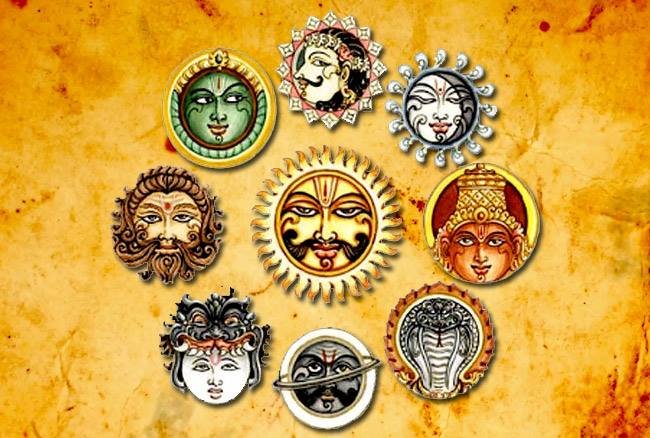

The Navgrah Mandir is a sacred temple dedicated to the nine celestial deities, known as the Navagrahas, who represent the nine planets in Vedic astrology. These deities are Surya (Sun), Chandra (Moon), Mangal (Mars), Budh (Mercury), Brihaspati (Jupiter), Shukra (Venus), Shani (Saturn), Rahu (North Lunar Node), and Ketu (South Lunar Node). Each graha is believed to influence human life and cosmic energies, and worshipping them is said to bring peace, prosperity, and protection from planetary afflictions.
The temple is usually designed with nine separate shrines or idols, each dedicated to one of the celestial bodies. Devotees perform special rituals, offerings, and recitations of mantras to appease the planets and reduce the negative impact of their positions in one’s horoscope.
Many Navgrah Mandirs across India are associated with ancient traditions and spiritual significance. Pilgrims visit them to seek blessings for health, success, and harmony in life. The belief is that sincere prayers at a Navgrah Mandir can balance planetary energies, remove obstacles, and open doors to divine grace.
Visiting a Navgrah Mandir is not only a religious experience but also a cultural journey that reflects India’s deep connection between astronomy, astrology, and spirituality.
The Navgrahas, or nine planetary deities of Hindu tradition, hold immense importance in Vedic astrology and spirituality as they govern the cosmic energies influencing human life. Surya (Sun) blesses with vitality, health, and authority; Chandra (Moon) governs emotions, peace, and stability of mind; Mangal (Mars) symbolizes strength, courage, and protection; Budh (Mercury) enhances intellect, speech, and communication; Brihaspati (Jupiter) is the divine teacher who grants wisdom, prosperity, and righteousness; Shukra (Venus) signifies love, beauty, wealth, and harmony in relationships; Shani (Saturn) is the lord of justice and discipline who rewards karma and teaches patience; while the shadow planets Rahu represents desires, ambitions, and sudden challenges, and Ketu symbolizes detachment, spiritual awakening, and ultimate liberation. Together, the Navgrahas reflect the balance of material and spiritual forces, and worshipping them with devotion is believed to reduce planetary afflictions, attract divine blessings, and guide individuals towards a life of harmony, prosperity, and inner growth.
The Navgrahas represent the nine celestial deities in Hindu tradition, each influencing human life and destiny in unique ways. Surya (Sun) is the giver of energy, health, and vitality, while Chandra (Moon) governs emotions, peace, and stability. Mangal (Mars) symbolizes strength, courage, and determination, and Budh (Mercury) enhances wisdom, communication, and intelligence. Brihaspati (Jupiter) blesses with knowledge, prosperity, and dharma, whereas Shukra (Venus) is associated with love, beauty, and wealth. Shani (Saturn) represents justice, karma, and discipline, teaching the importance of patience and hard work. Rahu, the north lunar node, signifies ambition, desires, and challenges, and Ketu, the south lunar node, symbolizes detachment, spirituality, and liberation. Worship of the Navgrahas is believed to balance planetary energies, remove obstacles, and bring harmony, prosperity, and spiritual growth in life.

All Navgrah Temple

















































